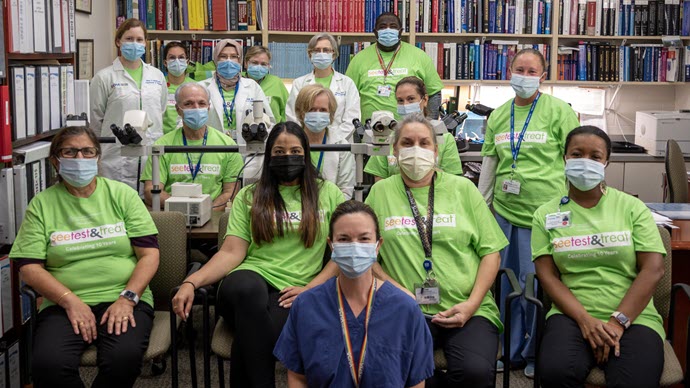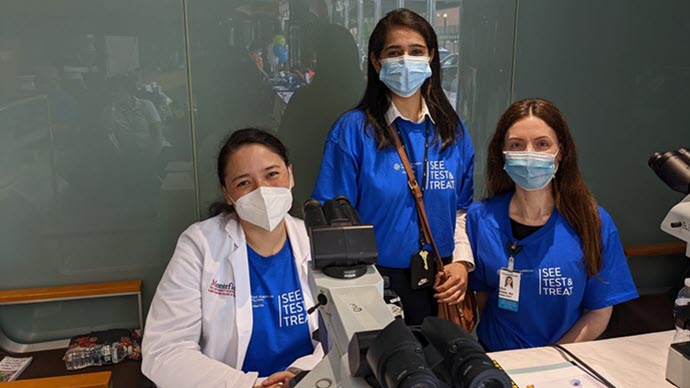Pathologists Work to Mitigate Health Care Disparities
The Kaiser Foundation reports that, as of 2021, Black, Hispanic, and Native American populations continued to lead their White counterparts in uninsured rates. Meanwhile, treatable and preventable diseases like breast and cervical cancer disproportionately affect minority communities.
For instance, Black women have a 40% higher mortality rate from breast cancer than White women, according to data compiled by the American Cancer Society. Black and Hispanic women also have a higher incidence rate of cervical cancer than their White counterparts. Both types of cancer are treatable, and even preventable—if detected early. As the doctors who diagnose disease, pathologists play a crucial role in the health outcomes of patients.
See, Test & Treat is a free cancer screening and health education program that connects pathologists with vulnerable communities often encompassing minority groups. The flagship initiative of the College of American Pathologists Foundation (CAP Foundation), each pathologist-led See, Test & Treat event brings the power of diagnostic medicine to medically underserved populations. In a single-day, culturally appropriate program, women receive a pelvic and clinical breast exam, a Pap test with same-day results, a screening mammogram with same-day or prompt results, connection to follow-up care, interpretive services, impactful health education, and translated educational materials to take home.
See, Test & Treat programs are typically a yearly event at each host institution, often held on a Saturday to avoid patients having to take off work. Each program reaches between 50 and 150 women and families, making it large enough to deliver real impact and efficiency, yet small enough to ensure a high-quality, dignified experience. The one-day approach effectively addresses barriers encountered by medically underserved women facing health disparities—those who have little to no access to preventative care—and also connects women with a medical home for the future.
Featured below are the stories of two See, Test & Treat patients who received critical diagnoses from the program.

